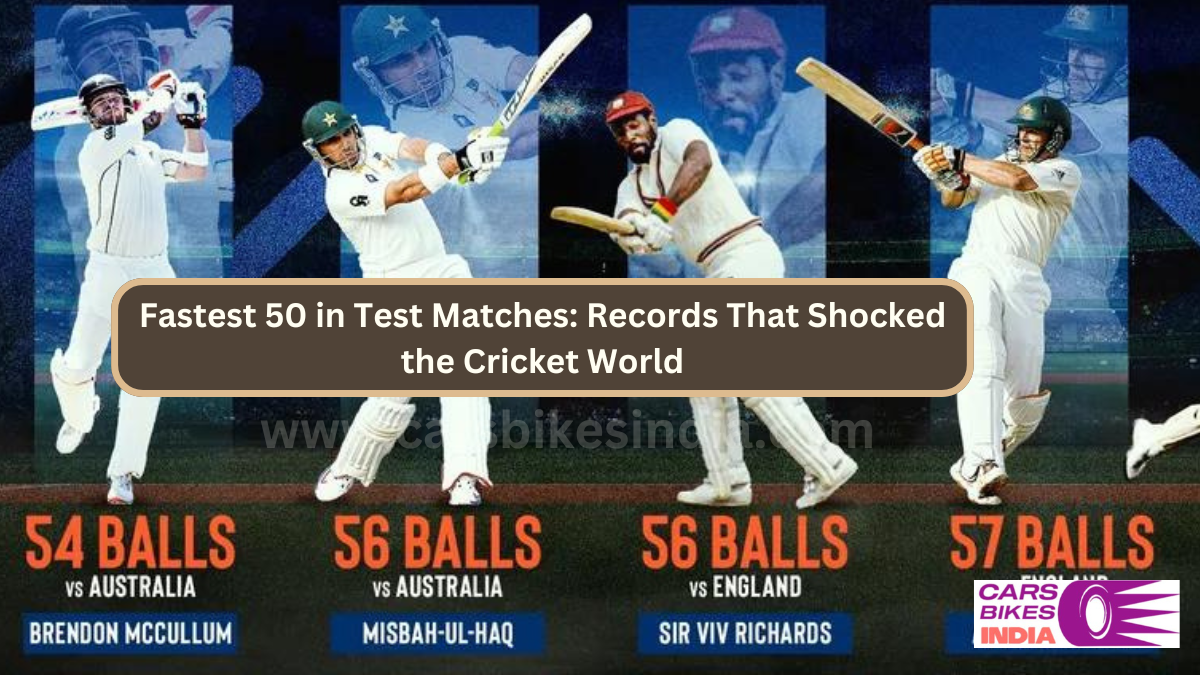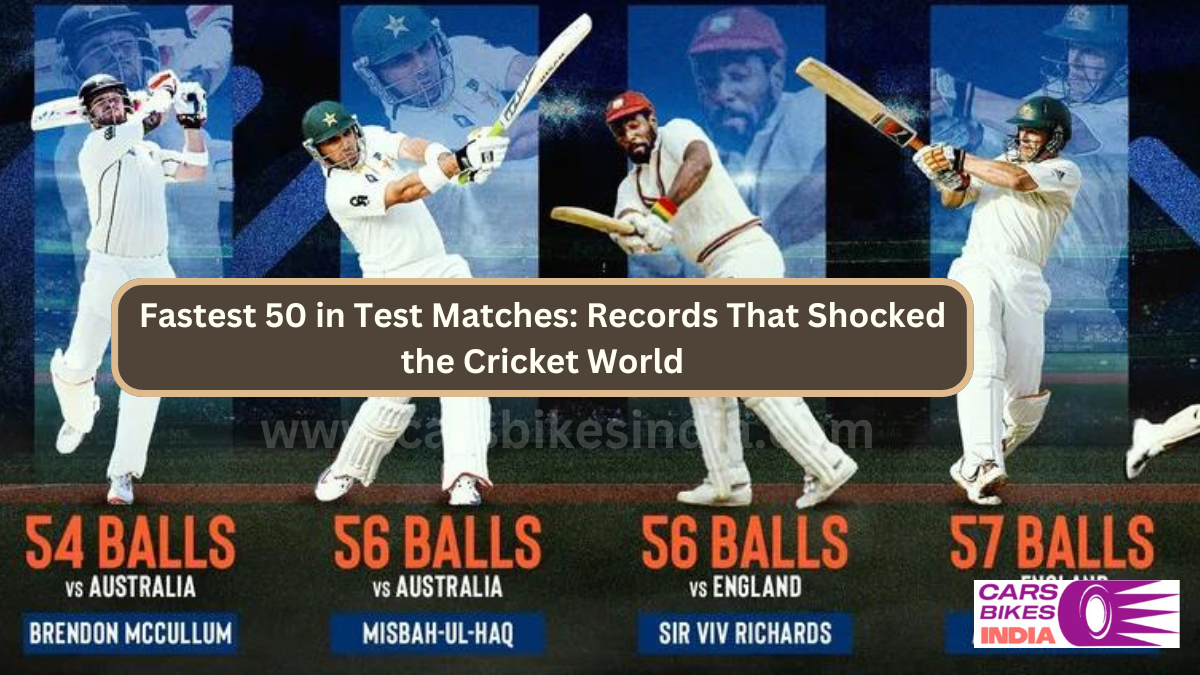Cricket has evolved significantly over the years, blending traditional techniques with modern aggression. Nowhere is this evolution more evident than in the pursuit of the fastest 100 in Test matches. A Test century, typically a mark of patience and perseverance, has often been achieved with flair, aggression, and breathtaking speed. In this article, we will explore some of the fastest centuries in Test cricket history and the players who have changed the game by shattering records with their incredible batting displays.

What Does It Take to Score the Fastest 100 in Test Cricket?
The fastest 100 in Test cricket is not just about a batsman hitting out; it’s a showcase of skill, adaptability, and audacity. Scoring a century in the fewest number of balls requires a perfect blend of shot selection, timing, and composure. The players who have accomplished this feat have redefined how Test cricket can be approached—showing that aggression can have a place even in the longest format of the game.
The Fastest Centuries in Test Cricket History
Let’s take a closer look at the players who hold the record for the fastest 100 in Test cricket and how they transformed the traditional dynamics of the game.
1. Brendon McCullum (54 Balls) vs Australia, 2016
Brendon McCullum, the former New Zealand captain, holds the record for the fastest 100 in Test cricket, achieved in just 54 balls against Australia in Christchurch in 2016. McCullum’s swashbuckling innings was a fitting end to his illustrious career, as he retired after that series.
McCullum’s aggressive approach was evident throughout his career, but this innings showcased his ability to take on a world-class bowling attack without fear. He smashed boundaries and sixes at will, leaving the Australian bowlers helpless. This century not only set a new benchmark for the fastest Test ton but also encapsulated McCullum’s fearless brand of cricket, which earned him a place among the legends of the game.
2. Vivian Richards (56 Balls) vs England, 1986
Sir Vivian Richards, one of the greatest cricketers of all time, previously held the record for the fastest 100 in Test cricket for almost 30 years. In 1986, Richards scored his century off just 56 balls against England in Antigua. Known for his dominant presence at the crease, Richards showed no mercy to the English bowlers, taking them apart with powerful strokes.
Richards’ aggressive style of play was ahead of his time, and this innings showcased his ability to score quickly in a format traditionally associated with patience. His innings not only entertained fans but also changed the perception of how Test cricket could be played.
3. Misbah-ul-Haq (56 Balls) vs Australia, 2014
Misbah-ul-Haq equaled Sir Vivian Richards’ record by scoring a century off 56 balls against Australia in Abu Dhabi in 2014. Known for his calm and composed demeanor, Misbah surprised everyone with his attacking approach during this innings, smashing the Australian bowlers all over the park.
This innings was significant not only because of its speed but also because it showcased Misbah’s versatility as a batsman. It demonstrated that even players known for their conservative approach could adapt to different situations and play with remarkable aggression when needed.
4. Adam Gilchrist (57 Balls) vs England, 2006
Australian wicketkeeper-batsman Adam Gilchrist scored one of the fastest centuries in Test cricket, reaching the milestone in just 57 balls against England during the 2006 Ashes series in Perth. Gilchrist’s innings was a display of pure aggression, hitting boundaries and clearing the ropes with ease.
Gilchrist’s ability to counterattack was a key component of Australia’s dominance in the early 2000s. This innings, in particular, demonstrated how a batsman could change the course of a Test match in a short span of time. His explosive batting at number seven redefined the role of a wicketkeeper-batsman in Test cricket.
5. Jack Gregory (67 Balls) vs South Africa, 1921
Jack Gregory, an Australian all-rounder, scored a century off just 67 balls against South Africa in Johannesburg in 1921. This innings came at a time when Test cricket was still in its formative years, making it an extraordinary achievement. Gregory’s approach was highly aggressive for that era, and his innings remained one of the fastest Test centuries for decades.
Gregory’s innings showed that attacking batting could be effective even in Test cricket. His ability to score quickly against quality bowlers made him a pioneer of aggressive play, setting the stage for future generations of cricketers to embrace a more attacking style.
6. Brian Lara (77 Balls) vs Pakistan, 2006
West Indies batting legend Brian Lara scored a century off 77 balls against Pakistan in Multan in 2006. Lara, known for his ability to play long innings, showcased his aggressive side during this match, scoring freely against the Pakistani bowlers.
fastest 100 in Test : Lara’s innings was a reminder of his ability to dominate any bowling attack. His aggressive stroke play, combined with his elegance and technique, made this century one of the most memorable in his illustrious career. Lara’s ability to switch gears and adapt his game made him one of the most versatile batsmen in Test cricket history.
How These Players Changed the Game
The players who have recorded the fastest 100 in Test cricket have changed the dynamics of the game, demonstrating that aggression has a place even in the longest format. Their contributions can be seen in several ways:
1. Changing the Perception of Test Cricket
Test cricket is traditionally seen as a battle of attrition, requiring patience and concentration. However, the players who scored these fast centuries challenged this perception. They showed that Test cricket could be played with aggression and flair, making the format more entertaining and appealing to a broader audience.
2. Redefining the Role of Batsmen
The fastest 100 in Test cricket have redefined the role of batsmen, especially those lower in the batting order. Players like Adam Gilchrist demonstrated that lower-order batsmen could change the course of a match with aggressive batting, making them an integral part of the team’s strategy.
3. Impact on Modern Test Cricket
fastest 100 in Test : The influence of these players can be seen in modern Test cricket, where teams now prioritize maintaining a higher scoring rate. The aggressive approach to batting has encouraged captains and players to take more risks, resulting in more results-oriented Test matches rather than drawn games.
The Legacy of Fastest Test Centuries
The fastest 100 in Test cricket represents the evolution of the sport, where players have pushed the boundaries of what is possible in the longest format. These centuries are not just records; they are statements of intent, showcasing the adaptability and skill of the batsmen.
Players like Brendon McCullum, Sir Vivian Richards, and Adam Gilchrist have left a lasting legacy, inspiring the next generation to embrace an attacking approach in Test cricket. Their innings have entertained fans around the world and brought a new dimension to a format that is often seen as slow-paced.
Conclusion
The fastest 100 in Test cricket is a testament to the changing face of the game. The players who have achieved this feat have not only entertained millions of fans but also changed how Test cricket is played and perceived. Their aggressive approach has brought a new level of excitement to the game, proving that Test cricket can be thrilling and dynamic.
From Brendon McCullum’s fearless final innings to Sir Vivian Richards’ dominance over England, these fast centuries are moments that will forever be etched in cricketing history. They remind us that even in a game built on patience, there is always room for aggression, innovation, and a fearless approach to batting.


